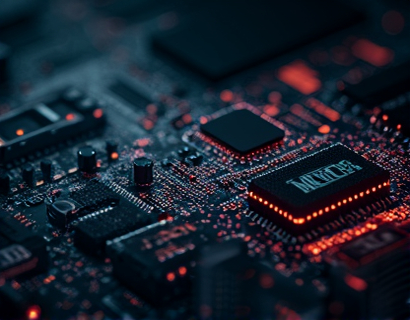DeFi Trading Optimized: Mastering Automated Market Makers for Enhanced Liquidity and Automation
In the rapidly evolving world of decentralized finance, or DeFi, traders and enthusiasts are constantly seeking ways to optimize their trading experiences. One of the most transformative advancements in this space is the development and implementation of Automated Market Makers (AMMs), particularly through smart-contract based solutions. These platforms are revolutionizing liquidity management and automated trading, offering unprecedented efficiency and accessibility in decentralized markets.
AMMs operate on a different principle compared to traditional order books. Instead of matching buy and sell orders from traders, AMMs use mathematical formulas to determine the price of assets based on the liquidity provided by users. This approach eliminates the need for order books and reduces the risk of slippage, making trades more predictable and fair.
Understanding Automated Market Makers
At the core of AMMs is the liquidity pool, a collective pool of assets locked by users to facilitate trading. These pools are managed by smart contracts, which enforce the rules of liquidity provision and trading. When a trader wants to exchange assets, the smart contract calculates the new prices based on the current ratio of assets in the pool and the trading algorithm used.
The most common algorithm used in AMMs is the Constant Product Market Maker (CPMM) model, where the product of the quantities of two assets in a pool remains constant. This model ensures that the price of assets adjusts dynamically based on market demand and supply, providing a more responsive and efficient trading experience.
Enhanced Liquidity Management
One of the key advantages of AMMs is their ability to provide enhanced liquidity management. Traditional trading platforms often suffer from low liquidity, especially for lesser-known tokens, leading to wider bid-ask spreads and higher transaction costs. AMMs address this issue by allowing users to deposit tokens into liquidity pools, earning liquidity provider (LP) tokens as a reward.
These LP tokens serve as a form of governance and incentivize users to contribute to the liquidity of the platform. The more liquidity a user provides, the more LP tokens they earn, which can be redeemed for fees generated from trades executed on the platform. This mechanism not only increases the overall liquidity but also aligns the interests of liquidity providers with those of the trading community.
Automated Trading Strategies
AMMs are not just about liquidity provision; they also empower traders to implement automated trading strategies with ease. Through the use of smart contracts, users can set up automated trading bots that execute trades based on predefined criteria, such as price thresholds or market conditions.
These bots can continuously monitor the market and execute trades at optimal times, reducing the need for constant manual intervention. This automation not only saves time but also helps in capitalizing on market opportunities more efficiently. Additionally, the transparency and immutability of smart contracts ensure that trades are executed fairly and without the risk of manipulation.
Benefits of Using AMMs
The adoption of AMMs brings numerous benefits to the DeFi ecosystem. Firstly, the elimination of order books reduces the risk of front-running and slippage, making trades more predictable. Secondly, the continuous market presence of liquidity pools ensures that trading can occur at any time, enhancing market accessibility.
Moreover, AMMs promote greater decentralization by allowing anyone to become a liquidity provider, thereby distributing control and rewards across a broader user base. This decentralized approach fosters a more inclusive and resilient financial system, aligning with the core principles of blockchain technology.
Challenges and Considerations
While AMMs offer significant advantages, they also come with their own set of challenges. One of the primary concerns is the impermanent loss, which occurs when the price of assets in a liquidity pool deviates significantly from their original deposit prices. This can result in users losing value compared to holding the assets outside the pool.
Another consideration is the complexity of smart contracts, which, if not properly audited, can pose security risks. Users must ensure that the AMM platforms they interact with have undergone rigorous security audits and have a proven track record of stability and reliability.
Future of DeFi Trading
The integration of AMMs into the DeFi ecosystem is just the beginning. As technology advances, we can expect even more sophisticated features and improvements. For instance, the development of cross-chain AMMs could enable seamless trading across different blockchain networks, further expanding the reach and utility of decentralized trading platforms.
Additionally, the combination of AMMs with other DeFi protocols, such as lending and yield farming, could create more complex and efficient financial products. These innovations have the potential to democratize access to advanced trading tools and financial services, making them available to a global audience.
Conclusion
Automated Market Makers represent a significant leap forward in decentralized trading, offering enhanced liquidity management and automated trading capabilities. By leveraging the power of smart contracts, AMMs provide a more efficient, fair, and accessible trading experience for crypto traders and DeFi enthusiasts.
As the DeFi landscape continues to evolve, AMMs will play an increasingly crucial role in shaping the future of decentralized finance. Whether you are a seasoned trader or a curious newcomer, understanding and utilizing AMMs can significantly enhance your trading strategy and overall DeFi experience.











































